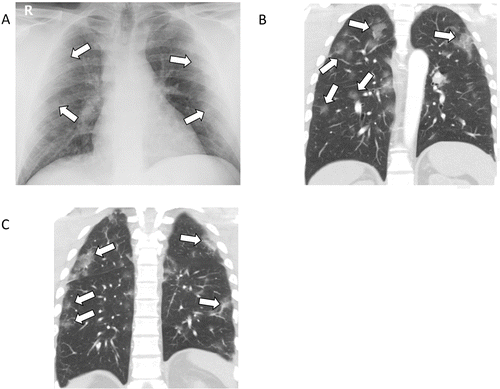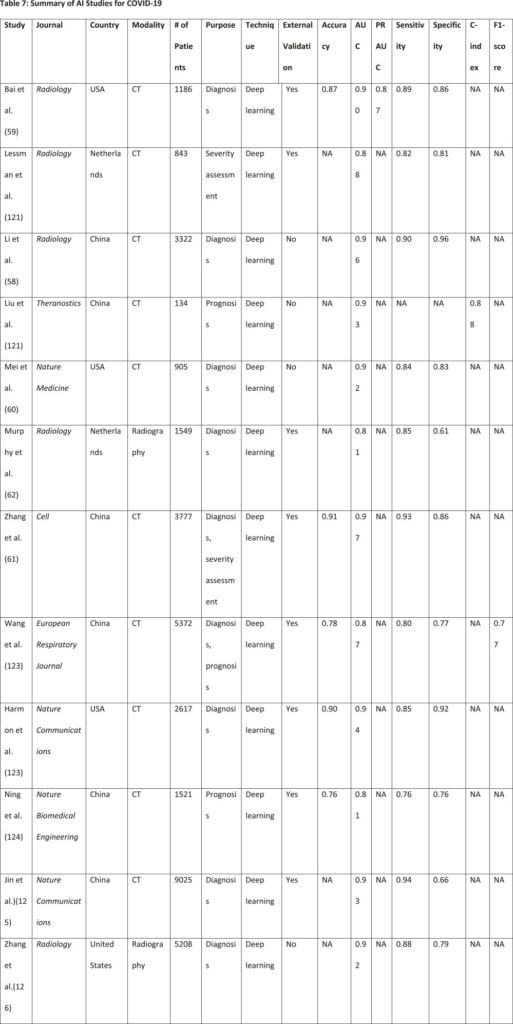COVID-19 Imaging: What We Know Now and What Remains Unknown

Figure 1: 37-year-old female with COVID-19 presenting with fever, cough, nausea, and diarrhea for one week. A, Posteroanterior chest radiograph shows mild, ill-defined pulmonary opacities in the periphery of the lungs bilaterally (arrows). B, C, Coronal unenhanced CT images of the chest show corresponding peripheral ground-glass opacities bilaterally, some with a rounded morphology.
Abstract
Several classification and reporting schemes were developed for chest imaging early during the pandemic for patients with suspected COVID-19 to aid in triage when the availability of RT-PCR testing was limited and its performance unclear.
Finally, artificial intelligence has shown promise in both diagnosis and prognosis of COVID-19 pneumonia both with respect to radiography and CT.
Introduction
In this review, we aim to summarize what is known about COVID-19 with respect to imaging as well as state what is not yet known.
What role does severity of disease on CT play in disease evaluation?
Assessment of disease severity by imaging in COVID-19 may inform clinical decisions related to need for hospital admission, timing of intubation, patient course and prognosis, and therapeutic efficacy.
What role does severity of disease on chest radiography play in disease evaluation?
CXR is commonly used as the initial diagnostic imaging test to evaluate patients with suspected or known COVID-19.
What is the Role of Artificial Intelligence in COVID-19 Evaluation?
Artificial intelligence (AI) based on imaging has a potentially important role in the diagnosis, disease quantification, severity assessment, and prognosis of COVID-19 pneumonia. AI has been proposed as a tool to reduce radiologists’ workload, streamline workflow, improve diagnostic accuracy, and facilitate resource allocation.
In summary, AI based on chest CT and CXR have demonstrated potential in both diagnosis and prognosis of COVID-19 pneumonia. However, to integrate these AI algorithms into routine clinical care in the fight against pandemic, we advocate the following: first, open-source datasets and code are strongly advocated for the broader community to train, test, and evaluate the performance of the machine learning classifiers.
This is exemplified by the recent publication of the RSNA International COVID-19 Open Annotated Radiology Database (RICORD) (64); second, true generalizability will need to be assessed in real-time in a prospective study design. If one or a few of these models can be validated prospectively, they could inform treatment algorithms and guidelines customized for patients along the spectrum of COVID-19 ranging from mild symptoms to death and pave the way for a bigger role of AI-based imaging in COVID-19 resurgence and future pandemics.
Extracts from https://pubs.rsna.org

Summary of CO-RADS Reporting System
© 2023, Envisionit Deep AI (Pty) Ltd. 2019/038117/07. All Rights Reserved. Terms & Conditions apply.

